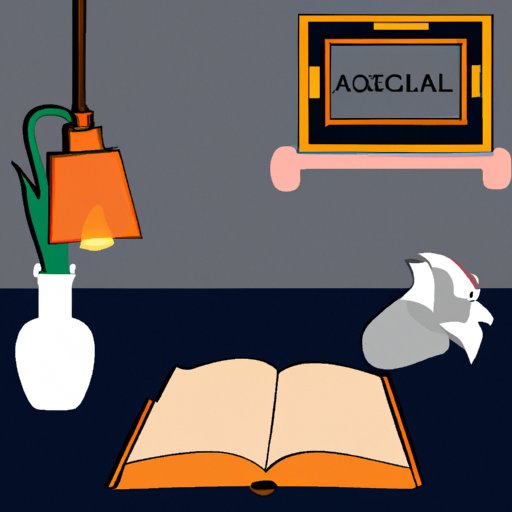
Exploring the Basics of Exposition in Writing
We’ve all heard the phrase “show, don’t tell” when it comes to writing, but what does that mean? Showing and telling are two distinct ways of conveying information to readers. Showing uses vivid descriptions and sensory details to draw readers in, while telling relies on exposition to provide context and background information. In this article, we’ll explore the basics of exposition in writing and how you can use it to craft compelling stories.
Definition of Exposition
Exposition is a literary device used to provide information about characters, settings, and events. It’s often used to explain the backstory or history of a story, as well as to introduce characters and their relationships. Exposition can also be used to provide important plot points and advance the story. It’s usually presented in the form of dialogue, narration, or description.

Examples of Exposition in Literature and Film
Exposition is a common element in both literature and film. In literature, authors often use exposition to convey information about a character’s past or to set up a scene. For example, in Ernest Hemingway’s The Old Man and the Sea, the opening lines are an example of exposition: “He was an old man who fished alone in a skiff in the Gulf Stream and he had gone eighty-four days now without taking a fish.” Here, Hemingway provides information about the protagonist and his current situation.
In film, exposition is often used to establish the setting, characters, and plot. For example, in the opening sequence of Star Wars, viewers are provided with a brief introduction to the main characters and the world they inhabit. This is an example of exposition in its most basic form—it provides the necessary information to understand the story.
An Introduction to Exposition: What Is It and How Can You Use It?
Now that we’ve explored the basics of exposition in writing, let’s take a closer look at how you can use it to shape a narrative. Understanding the purpose of exposition can help you craft a more compelling story.
Understanding the Purpose of Exposition
The purpose of exposition is to provide the reader with information they need to understand the story. It can be used to introduce characters, reveal backstory, and set the stage for the events that will follow. While some writers may be tempted to simply tell the reader everything they need to know, it’s important to remember that too much exposition can detract from the story. Instead, try to weave exposition into the narrative in a natural way.
Using Exposition to Shape a Narrative
Exposition can be used to shape a narrative in several ways. For example, it can be used to introduce new characters or to reveal important plot points. It can also be used to move the story along by providing the reader with context and background information. When used effectively, exposition can give your story depth and complexity. However, it’s important to remember that exposition should only be used when necessary—too much exposition can make a story feel clunky and disjointed.

Crafting a Story Through Exposition: Tips for Writers
Now that you have a better understanding of what exposition is and how it can be used to shape a narrative, let’s take a look at some tips for crafting effective exposition. Identifying the elements of effective exposition and using them to your advantage can help you create a compelling story.
Identifying the Elements of Effective Exposition
When crafting effective exposition, it’s important to identify the key elements of your story. Consider the characters, setting, and plot points that are essential to your story. Once you’ve identified these elements, you can begin to craft a narrative that incorporates them. For example, if your story takes place in a fictional world, you might use exposition to provide readers with information about the geography and culture of the world.
Creating a Compelling Story Through Exposition
Once you’ve identified the key elements of your story, you can begin to craft a narrative that incorporates them. Try to use vivid descriptions and sensory details to draw readers in. Additionally, focus on creating a consistent flow of information—too much exposition can make a story feel disjointed. Finally, consider how you can use exposition to move the story forward and provide readers with insight into the characters and their motivations.
Understanding Narrative Structure With Exposition
In addition to crafting a compelling story, you should also consider how you can use exposition to create a strong narrative structure. By understanding the different types of exposition, you can use them to your advantage to create a cohesive story.
Exploring the Different Types of Exposition
There are several different types of exposition, each of which serves a different purpose. Narrative exposition is used to provide background information about the story, such as setting and character development. Descriptive exposition is used to describe a character’s physical appearance or emotional state. Finally, dramatic exposition is used to reveal important plot points and move the story forward.
Utilizing Narrative Structure to Your Advantage
Once you’ve identified the different types of exposition, you can begin to craft a narrative structure that utilizes them. Try to weave exposition into the narrative in a natural way—for example, you might use descriptive exposition to introduce a character or dramatic exposition to reveal an important plot point. Additionally, consider how you can use exposition to create tension and suspense. By strategically placing exposition throughout your story, you can create a compelling narrative structure.
Using Exposition to Create a Compelling Plot
Finally, let’s take a look at how you can use exposition to create a compelling plot. Analyzing how exposition can influence the plot can help you write an effective story.
Analyzing How Exposition Can Influence the Plot
Exposition can be used to shape the plot in several ways. For example, it can be used to introduce new characters or to reveal important plot points. Additionally, it can be used to move the story along and provide context for the events that follow. When used effectively, exposition can add depth and complexity to a story.
Writing an Effective Plot Using Exposition
When writing an effective plot using exposition, it’s important to consider how you can use it to your advantage. Think about how you can use exposition to introduce new characters or provide context for the events that follow. Additionally, consider how you can use exposition to create tension and suspense. Finally, think about how you can use exposition to move the story forward and create a compelling narrative structure.
Conclusion
Exposition is a powerful tool for writers. It can be used to provide readers with background information and to shape the narrative. By understanding the basics of exposition and how you can use it to craft a compelling story, you can create an engaging and memorable experience for your readers.
(Note: Is this article not meeting your expectations? Do you have knowledge or insights to share? Unlock new opportunities and expand your reach by joining our authors team. Click Registration to join us and share your expertise with our readers.)
